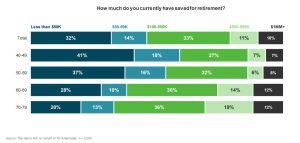Having $20 million is a significant financial milestone, and understanding the potential yearly interest on such a sum can provide valuable insights into investment strategies, financial planning, and wealth management. In this article, we will explore the concept of yearly interest on $20 million, examining factors such as investment vehicles, interest rates, and considerations for maximizing returns.
I. Investment Vehicles and Potential Returns
- Savings Accounts: While savings accounts offer security and liquidity, they generally provide minimal returns in terms of interest. The average interest rate for savings accounts tends to be relatively low, often below 1% annually. Consequently, the yearly interest on $20 million in a savings account may only amount to a few hundred thousand dollars, making it less attractive for significant wealth growth.
- Certificates of Deposit (CDs): CDs offer a slightly higher interest rate than savings accounts. These time-bound deposits can range from a few months to several years. The interest rates for CDs vary depending on the duration and the prevailing market rates. However, even with a higher interest rate, the returns on $20 million may still be relatively modest.
- Bonds: Bonds are fixed-income securities that provide regular interest payments. Depending on the type of bond, the interest rates can vary. U.S. Treasury bonds, for instance, are considered low-risk investments, but they generally offer lower interest rates compared to corporate bonds. The yearly interest on $20 million invested in bonds will depend on the prevailing rates and the specific bonds chosen.
- Stocks and Equities: Investing in stocks and equities can potentially yield higher returns over the long term. However, the stock market is subject to fluctuations and risks. It is essential to carefully assess individual stocks or consider diversified portfolios, such as mutual funds or exchange-traded funds (ETFs), to mitigate risk. The yearly returns on $20 million invested in stocks can vary significantly, depending on market performance, individual stock choices, and the level of diversification.
II. Factors Affecting Interest Rates and Returns
- Market Conditions: Interest rates are influenced by market conditions, including monetary policy decisions by central banks, inflation rates, and overall economic indicators. When interest rates are low, the returns on fixed-income investments may be modest. Conversely, during periods of higher interest rates, investors may have the potential to earn higher yields.
- Risk Appetite: The level of risk an investor is willing to take affects the potential returns. Higher-risk investments, such as stocks or real estate, can yield substantial returns but also come with increased volatility. Lower-risk investments, such as government bonds, may offer more stable returns but at a lower interest rate.
- Investment Duration: The length of time funds are invested can impact the overall returns. Investments with longer durations, such as long-term bonds or stocks held for extended periods, have the potential for higher returns but also involve greater exposure to market fluctuations.
- Diversification: Diversifying investments across various asset classes and sectors can help mitigate risk and potentially enhance returns. A well-diversified portfolio reduces the impact of individual investment performance on the overall returns. Consider consulting with a financial advisor to determine the optimal asset allocation and diversification strategy for a yearly interest on 20 million dollars
III. Financial Considerations and Wealth Management
- Tax Implications: It is crucial to consider the tax implications associated with investment returns. Different investment vehicles are subject to varying tax treatments, such as capital gains taxes on stocks or interest income taxes on bonds. Consult with a tax advisor to understand the tax obligations and develop tax-efficient investment strategies.
- Wealth Preservation and Growth: Wealth management goes beyond maximizing investment returns. Considerations for estate planning, asset protection, and risk management play a vital role in preserving and growing wealth. Engaging the services of financial professionals, such as wealth managers or financial advisors, can provide valuable guidance in managing and growing a $20 million portfolio.
- Financial Goals and Lifestyle: Clarify your financial goals and lifestyle aspirations when strategizing the utilization of investment returns. Balancing current income needs with long-term growth objectives is essential. Careful financial planning and budgeting can help ensure that the yearly interest on $20 million aligns with your desired lifestyle and financial milestones, Check Yearly interest on 20 million dollars
Conclusion
Understanding the concept of yearly interest on $20 million involves considering various investment vehicles, interest rates, and financial considerations. While the specific returns will depend on market conditions, investment choices, and individual risk appetite, exploring diverse investment options, assessing risk tolerance, and seeking professional advice can help maximize returns and align with financial goals. Ultimately, developing a comprehensive wealth management strategy is crucial for effectively utilizing the yearly interest on $20 million to preserve and grow wealth.






